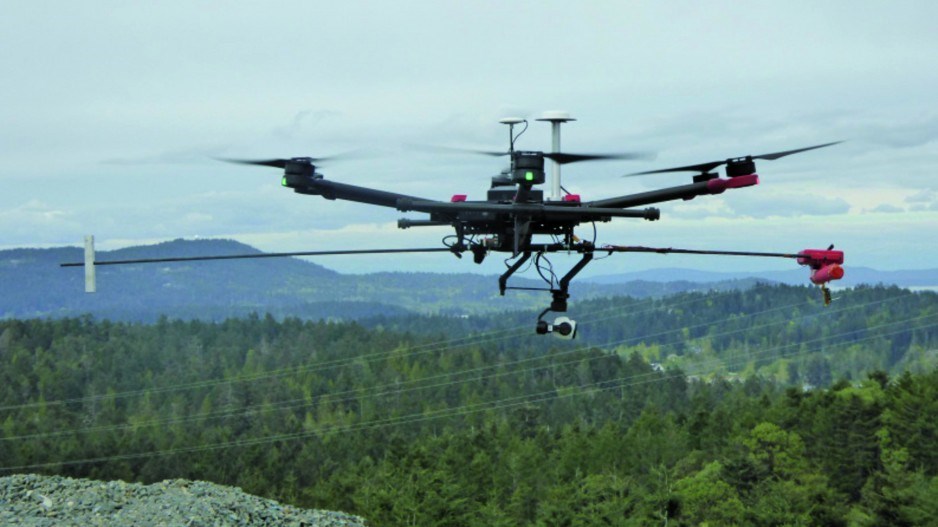“What is the province doing about getting a baseline on greenhouse gases?”
Asked that question at a panel on energy Wednesday September 27 during the Union of BC Municipalities (UBCM) convention, B.C. Energy, Mines and Petroleum Resources Minister Michelle Mungall deferred the question to Environment Minister George Heyman, who was not there to answer.
Turns out Geoscience BC has the answer: It’s using drones and technology developed by NASA for its Mars missions to sniff out methane and create a real-time GHG database – the first of its kind in Canada
The new technology will be demonstrated later this afternoon at the UBCM convention.
Using technology developed by NASA and the Jet Propulsion Laboratory, Geoscience BC will use low-flying drones that will be able to detect and pinpoint methane molecules to create what is being billed as Canada’s first real-time GHG database.
As detailed in Business in Vancouver in July, from a climate change perspective, one of the biggest concerns with the oil and gas industry in B.C. is fugitive methane leakage from gas wells.
Although it is more short-lived than CO2, methane has greater heat insulation properties, so it has a much higher global warming potential.
But natural gas wells aren’t the only source of methane. Cattle and decomposing organic matter also produce it, so determining just how much methane comes from natural sources or the gas industry can be challenging, especially in northeastern B.C., which has both cattle ranches and natural gas wells.
Currently, GHGs from gas fields are estimated using periodic sampling and computer modelling. The new GHGMap project will provide more accurate mapping. Geoscience BC says it will be the first real-time GHG database in Canada.
It will initially be used in B.C.’s natural gas fields, but will eventually extend its use to other areas in Western Canada.




